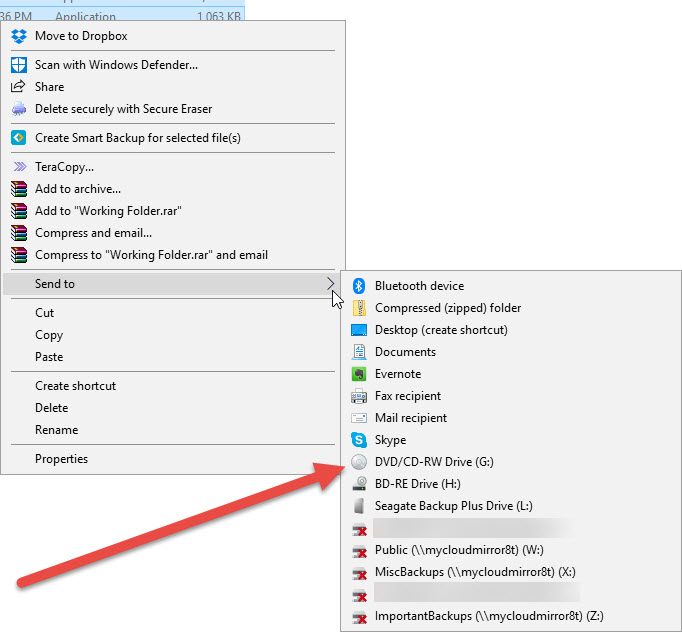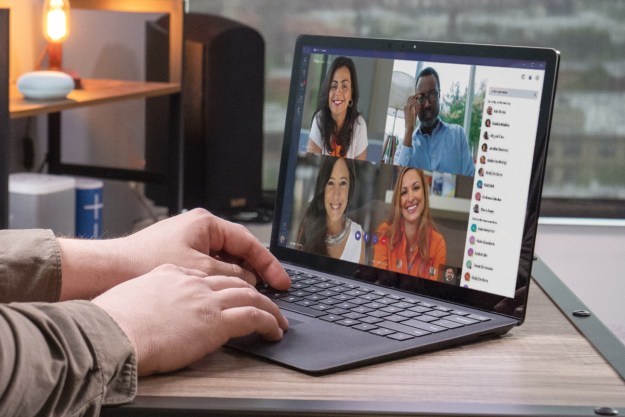A decade ago, storing information or your favorite songs on a CD was the go-to, but with modern technology, most people don’t bother with burning CDs anymore. If you still have an old CD player or you’re just looking to relive the past, there’s no reason why you can’t burn a CD, though.
Whether you’re burning CDs for the first time or need a little refresher, you need a computer that reads CDs, the files you want to burn, and a blank CD.
Before you begin: Gather your tools and materials
To burn a CD, you’ll need two things. First, you’ll need a CD or DVD recorder drive (aka a burner). If you don’t have one and you’re using a desktop with an open external drive bay, it’s easy enough to purchase and install one. You can also use an external USB drive, which is handy for a notebook that doesn’t have a CD or DVD drive. You’ll spend about $20 for an or an ($29).
Next, you’ll need a supply of blank CDs. Stick with CD recordable (CD-R) discs to be sure your CDs will be supported on any hardware. You’ll spend around from a reputable manufacturer like Verbatim.
Finally, give some thought to what you want to burn to your CD. If you want to burn data for safekeeping or to pass along to someone else, then the simplest way is to use Windows 10’s File Explorer utility. If you want to burn music that’s most likely to play on either a computer or a dedicated CD player (such as in a car stereo or a boombox), then you can use the Windows Media Player desktop app that still ships with the latest versions of Windows 10.
Method 1: Burn a data CD
Step 1: Burning a data CD is simple enough. Just place a blank CD-R into your burner and close the tray. Open File Explorer and then check out the status of your CD burner — you should see an indication that a CD-R is inserted and how much space is free.
Step 2: Decide which data files you can burn to the CD. It’s easiest to create a working folder and then open a second File Explorer window for selecting your data files. Hit Ctrl-A on your keyboard to select all of the files, then right-click. From the context menu, select Send To and then select your CD burner from the list of options.

Step 3: A dialogue will open, asking how you want to use the disc. You have two options for how you burn your CD. You can also enter a disc title via this dialog.
Step 4: First, you can select Like a USB Flash Drive. This means that in Windows XP or later, you can add more files, edit files, or delete files on the same CD (a CD-RW disc is best for this because the format has the ability to be rewritten and reused over and over). The downside of this option is that the CD will not work on any other kind of PC, such as MacOS or a Linux-powered system. Once you’re finished with the CD and want to make sure it can work with any system, then you can go to File Explorer, right-click on your CD burner, and select Close Session. Note that once you close the CD, you will no longer be able to make any changes to it.
Step 5: Second, you can select With a CD/DVD Player. Choosing this option will copy your files to the CD and then close the session, making the data available on any PC. The downside here is that once your files are burned, you can’t edit or delete them at all.
Note that if you copy some kinds of files, such as music (MP3 or WMV) or images (JPEG), those files can be played on supported PCs. They may or may not work on stand-alone electronic devices such as CD or DVD players, however. If you want to make sure that your music will play on any CD or DVD player, then skip to the next section.
Method 2: Burn a music CD
Windows 10 has advanced in a number of ways, but it retains some older tools that can still be useful in a pinch. Windows Media Player is essentially a legacy application and hardly the best media player, but it includes a handy CD burner utility that makes it easy to create a music CD that can play just about anywhere.
Step 1: To get started, go to the search box (in the taskbar) and start typing “Windows Media Player.” Once it pops up in the list, click on it. Then, select the Burn tab in the upper-right-hand corner.
Step 2: Next, go to File Explorer and locate the music files that you want to burn to the CD. Drag them over to the burn list. Windows Media Player will tell you how many minutes you’ve used; make sure you’re not exceeding the 80-minute limit. You can hit the Clear List option if you want to start over.
Step 3: Next, hit the Start Burn option to begin the process of burning your music files to the CD. Windows Media Player will provide a progress report as the burn is running. Keep in mind that it takes a few minutes to close the session, so be sure to wait until the process is all the way done before you eject your CD. If you don’t, you could lose your progress or otherwise sabotage your efforts of burning a CD.
Conclusion
Burning a CD is that simple. A CD that you burn yourself can work as well as a flash drive if you use a Windows XP or later machine. You can also burn CDs to share data and music files with other people; they can use the discs with their PCs, DVD players, or CD players.
At a mere $0.15 to $0.25 per 700MB, CD-R media fits into anyone’s budget. CDs are also durable, so the data you burn to them will be accessible for years to come. If you want something better than a CD, newer and higher-capacity storage options exist plentifully today.
Even if you haven’t burned a CD before, you’ll find that it’s an easy task to learn. For those of you who haven’t burned a CD since the ’90s, it’ll take no time to refresh your memory.
Editors' Recommendations
- The best business laptops from Apple, Lenovo, Dell, and more
- 11 best graphics cards of 2024: the GPUs I’d recommend to any PC gamer
- These are the 10 best gaming PCs I’d recommend to anyone
- The best laptop brands for 2024
- How to choose the best RAM for your PC in 2024







